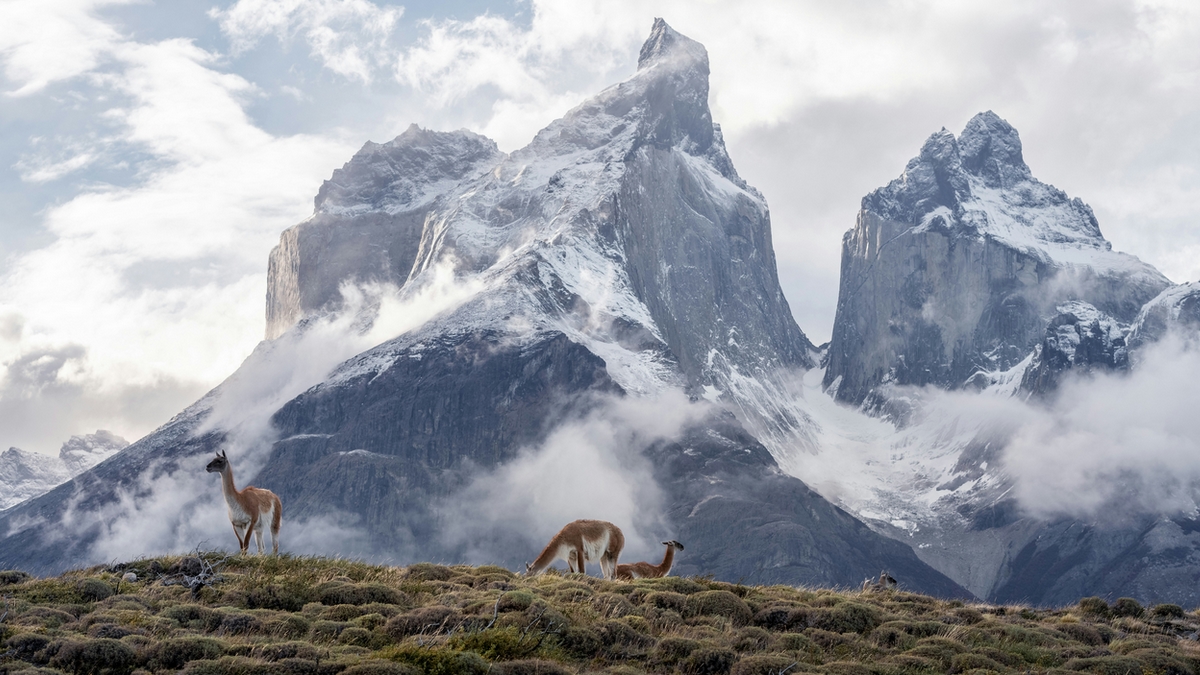Truth & Goodness
4,000 Space Mirrors Could Light Up Earth. Is It Day or Disaster?
04 December 2025

For years, no one could explain why hundreds of stone walls stretched across the heart of Chile, high above sea level. However, the latest archaeological research has revealed their true purpose. It turns out that these mysterious structures in the Andes were part of an ingenious system created by people thousands of years ago.
There is nothing accidental about them. Wall after wall, hundreds of meters of stone constructions wind along the slopes of the Andean valleys, almost as if someone had deliberately routed them through the most inaccessible places. You can see them only from a bird’s-eye view; from the ground level, they disappear into the rugged, mountainous landscape.
For decades, no one could explain who built them or for what purpose. Only a combination of satellite image analysis and field research by archaeologists revealed their true purpose—and it turned out to be completely different from what anyone had previously assumed.
Adrián Oyaneder, an archaeologist from the University of Exeter, was analyzing maps of northern Chile when he spotted something on his computer screen that should not have been there. Hundreds of meters of stone walls snaked through the Camarones River valley, running at an unnatural angle up steep slopes.
Some walls were up to 150 meters long and over one and a half meters high. They aligned in such precise lines that they looked like traces of a planned undertaking—but why would anyone build this at an altitude of over 2,700 meters?
“I thought it was a bug in the satellite data. Or maybe that I needed new glasses,” he admitted in an interview with National Geographic. One thing was certain: natural rock formations do not create shapes like these. When Oyaneder’s team finally reached the site, the mystery of these structures in the Andes only deepened.
At the site, the stone walls turned out not to be abandoned pastoral enclosures, as initially suspected. They arranged themselves into surprisingly precise forms—always in pairs, creating wide, tapering corridors in a V-shape.
Each corridor led to a fenced, circular area, as if someone were deliberately guiding something… or someone. Local residents could not explain their purpose, but they had their own name for these formations: trampas para burros—”donkey traps.” This single term became a turning point and the clue that led Oyaneder to the discovery recently described in the prestigious journal Antiquity.
The breakthrough arrived only after comparing the mysterious structures in the Andes with ancient documents from Peru. Archival archaeological reports from the 20th century mentioned gigantic stone constructions called chacu.
The Incas used chacu during “royal hunts” for the vicuña—a wild, agile animal from the camel family, valued for its incredibly precious wool. When Oyaneder compared the layout of those Peruvian structures with the discoveries in Chile, everything suddenly fit together. The constructions from the Camarones Valley were the missing piece of the puzzle—the Chilean equivalents of the Inca hunting traps.
The field analysis revealed the phenomenon’s scale: Oyaneder identified 76 such constructions, and some may be up to 6,000 years old. Moreover, some were still in use several hundred years ago, even during the Inca Empire. Their operation was ingenious in its simplicity—the long stone walls in the Andes gradually narrowed, creating a kind of giant funnel that led directly to a circular pen. This allowed hunters to efficiently drive entire herds of vicuñas into one spot without a long chase.
“If you have very elusive animals, a small number of people, and you want to be effective—this is the ideal solution,” the archaeologist explains.
The history becomes even more intriguing here. Oyaneder discovered something nobody expected: these constructions were not an isolated invention of Andean cultures.
Vicuñas—wild relatives of llamas—roamed the Andean plateaus in huge herds for thousands of years. Today, they are rare because the Spanish nearly wiped them out for their valuable wool. However, traces of the ancient hunts have survived.
Rock art in the Andes still shows scenes where animals are driven into chacu—stone traps identical to those discovered in Chile. Interestingly, all such Andean structures are located above 2,700 meters above sea level—exactly where the wild herds migrated for centuries.
Oyaneder also identified nearly 800 nearby stone shelters and hunting camps. This proves that this method of hunting was much more common than previously thought.
As it turned out, the Andean traps are not an isolated case. Similar constructions have been discovered thousands of kilometers away—in Jordan, Saudi Arabia, and Uzbekistan. The structures there, known as “desert kites,” also consist of two long walls converging at a single point, where animals were driven into an enclosure. They were used for hunting gazelles and wild camels—exactly like the chacu in the Andes.
This fascinating similarity intrigues anthropologists. Although these regions never had contact, their inhabitants came up with the same idea independently. Scientists call this phenomenon cultural convergence—when different societies independently create similar technological solutions.
The discovery of these stone traps in the Andes shows that ancient South American cultures used clever and organized hunting methods long before the Inca civilization arose. These constructions were not accidental; they were part of a thoughtful system that required cooperation and planning. Archaeologists agree: the mysterious structures in the Andes still hide secrets that could rewrite the region’s history.
Read this article in Polish: Tajemnicze kamienne mury w Andach. Archeolodzy rozwiązali ich zagadkę